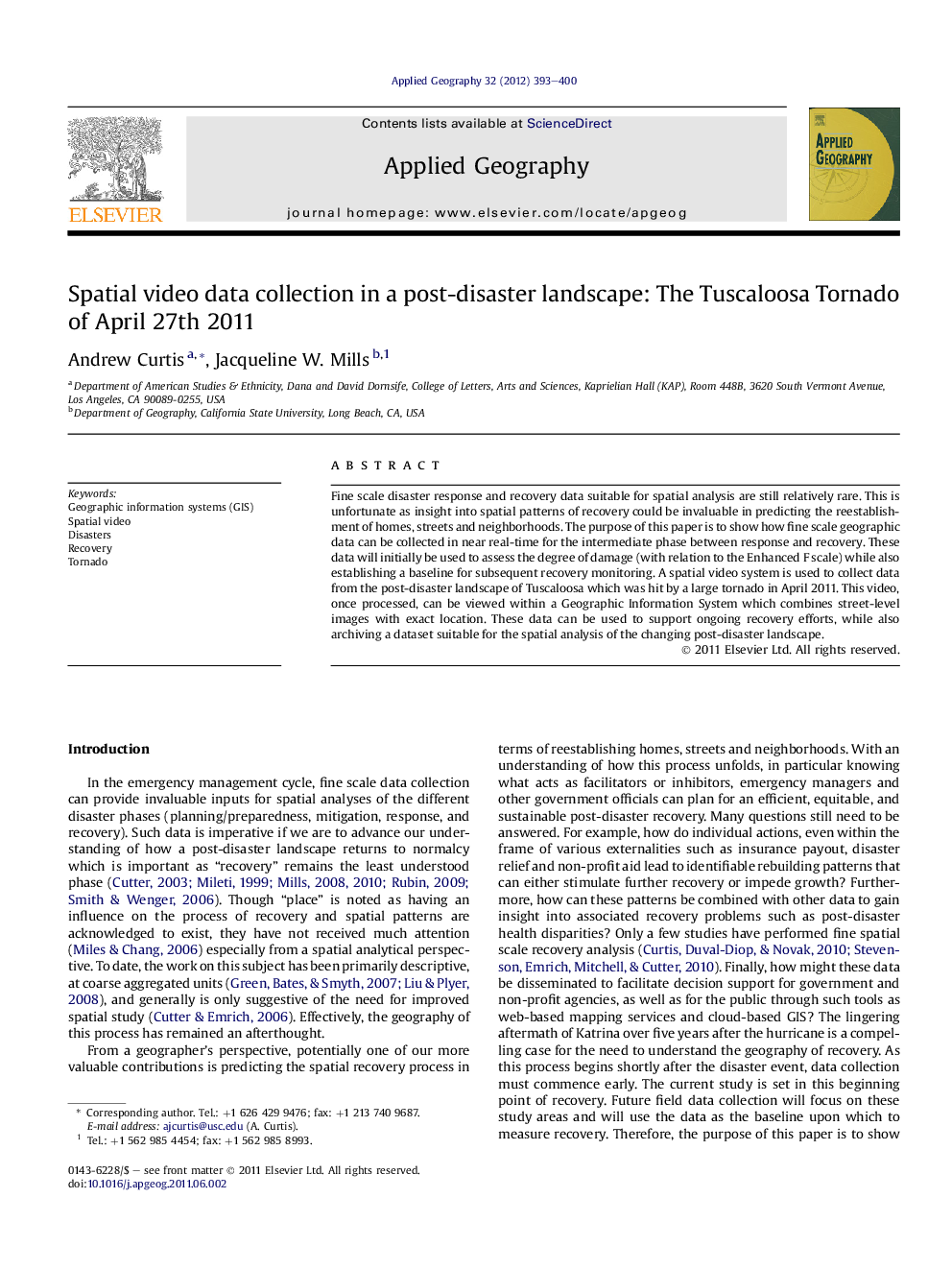| Article ID | Journal | Published Year | Pages | File Type |
|---|---|---|---|---|
| 83564 | Applied Geography | 2012 | 8 Pages |
Fine scale disaster response and recovery data suitable for spatial analysis are still relatively rare. This is unfortunate as insight into spatial patterns of recovery could be invaluable in predicting the reestablishment of homes, streets and neighborhoods. The purpose of this paper is to show how fine scale geographic data can be collected in near real-time for the intermediate phase between response and recovery. These data will initially be used to assess the degree of damage (with relation to the Enhanced F scale) while also establishing a baseline for subsequent recovery monitoring. A spatial video system is used to collect data from the post-disaster landscape of Tuscaloosa which was hit by a large tornado in April 2011. This video, once processed, can be viewed within a Geographic Information System which combines street-level images with exact location. These data can be used to support ongoing recovery efforts, while also archiving a dataset suitable for the spatial analysis of the changing post-disaster landscape.
► Spatial video data can be collected quickly and cheaply to create a fine-scale GIS of a post-disaster landscape. ► Damage assessment can be used to assess wind strength along a tornado path. ► The fine scale data collected using a spatial video provides a benchmark for subsequent recovery monitoring.
